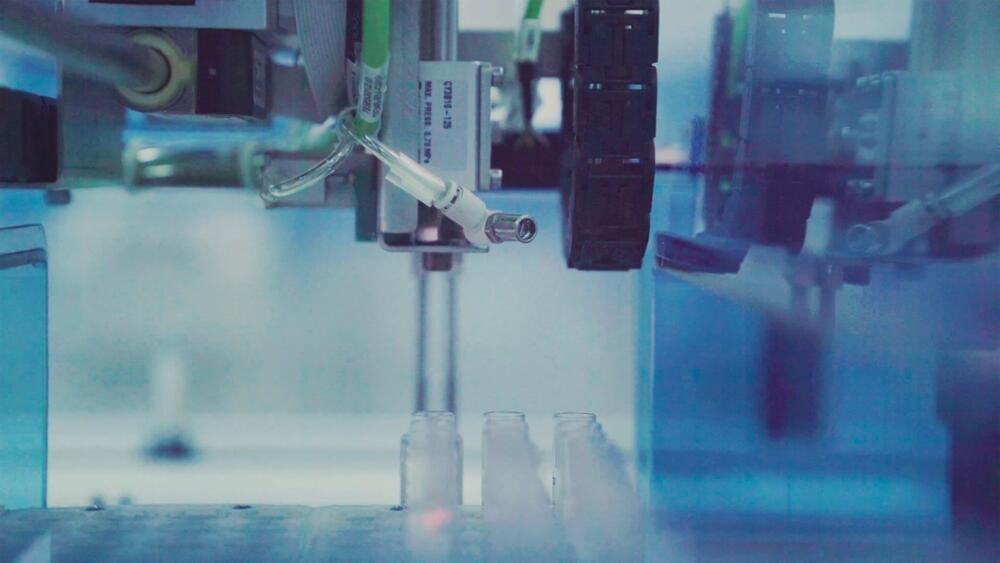The Co-founder of Formic Ventures, Michael Antonov, is using logic and innovation to drive the longevity sector forward.
Category: life extension – Page 331
Timeline: What If Humans Were Immortal
Oh the things we can see and accomplish when time and death can no longer hinder us.
Immortality is eternal life, being exempt from death, unending existence.
Human beings seem to be obsessed with the idea of immortality. But a study published in the journal Proceedings of the National Academy of Sciences has stated, through a mathematical equation, that it is impossible to stop ageing in multicellular organisms, which include humans, bringing the immortality debate to a possible end.
So you probably don’t want to die, most people don’t. But death takes us all no matter what we want. However, today in our scenario, humans have found a way to obtain that immortality. Watch the whole timeline video to find out how reaching immortality changes the world and the way we live.
DISCLAIMER: This Timeline/Comparison is based on public data, surveys, public comments & discussions and approximate estimations that might be subjected to some degree of error.
Icons: www.flaticon.com

Researchers design antibodies that destroy old cells, slowing down aging
No one knows why some people age worse than others and develop diseases-such as Alzheimer’s, fibrosis, type 2 diabetes or some types of cancer-associated with this aging process. One explanation for this could be the degree of efficiency of each organism’s response to the damage sustained by its cells during its life, which eventually causes them to age. In relation to this, researchers at the Universitat Oberta de Catalunya (UOC) and the University of Leicester (United Kingdom) have developed a new method to remove old cells from tissues, thus slowing down the aging process.
Specifically, they have designed an antibody that acts as a smart bomb able to recognize specific proteins on the surface of these aged or senescent cells. It then attaches itself to them and releases a drug that removes them without affecting the rest, thus minimizing any potential side effects.
The results of this work, which have been published in Scientific Reports, open the door to the development of effective treatments to delay the progress of age-related diseases and even the aging process itself in the longer term, with the aim of increasing the longevity and, above all, the quality of life of people at this stage of their lives.
Resveratrol, Fasting, & Rapamycin | Matt Kaeberlein
Interview with a very important researcher who gives a reality check on a few things (Sirtuins) and explains how effective Rapamycin has been.
Professor Matt Kaeberlein discusses aspects of aging and proposed interventions to improve health. He gives an in-depth review on sirtuins, resveratrol, fasting, NAD precursors, and rapamycin.
Timestamps.
0:00 Intro.
0:25 Discovery of Sirtuins.
7:30 Resveratrol & Health.
11:05 Calorie Restriction & Fasting.
17:07 What Is A Healthy Diet?
21:46 NAD+ Precursors.
29:07 Rapamycin & Lifespan.
32:50 Rapamycin & Dog Aging Project.
38:45 Intermittent Fasting In Dogs.
40:45 Rapamycin Human Clinical Studies.
50:30 DNA Methylation Clocks.
54:15 What Areas Are Exciting For Healthspan Extension?
56:25 Yamanaka Factors.
59:55 How Do We Avoid Hype Over Substance?
1:06:50 Senolytics.
1:17:36 What Supplements Does Professor Kaeberlein Take?
My full supplement stack: http://bit.ly/39vRnXX
Supplements I source from Amazon: http://amzn.to/3o2ULOV
✨10% Discounts✨



HEALTH EXPERT Reveals The Secret To AGING IN REVERSE | David Sinclair
I’m confused. At 34:20 he says he says people in clinical trials had there age reversed 2 years (I assume he is talking about thymus rejuvenation) and it is additive so people who had it 4 times went back 8 years. Ok. AND?! I mean am I missing something here? Is this not what we are after? I’m 50 now, so if I did it 13 times will I be 24 again?
My guest today is a revolutionary thinker and ground-breaking scientist who’s on a mission to make you younger. He’s Australian biologist and Harvard professor David Sinclair, author of Lifespan: Why We Age – And Why We Don’t Have To. David is one of the world’s leading scientific authorities on longevity, ageing and how to slow its effects.
#feelbetterlivemore.
–
Connect with David:
Instagram https://www.instagram.com/davidsinclairphd.
Facebook https://www.facebook.com/davidsinclairphd/
Twitter https://twitter.com/davidasinclair.
Website https://www.doctorsinclair.com.
About David https://sinclair.hms.harvard.edu/people/david-sinclair.
David’s book:
Aided by stem cells, a lizard regenerates a perfect tail for the first time in 250 million years
Lizards can regrow severed tails, making them the closest relative to humans that can regenerate a lost appendage. But in lieu of the original tail that includes a spinal column and nerves, the replacement structure is an imperfect cartilage tube. Now, for the first time, a USC-led study in Nature Communications describes how stem cells can help lizards regenerate better tails.
“This is one of the only cases where the regeneration of an appendage has been significantly improved through stem cell-based therapy in any reptile, bird or mammal, and it informs efforts to improve wound healing in humans,” said the study’s corresponding author Thomas Lozito, an assistant professor of orthopaedic surgery and stem cell biology and regenerative medicine at the Keck School of Medicine of USC.
Harvard University professor geneticist Dr. George Church stops by the Institute
Talking about RejuvenateBio starts at 20:30. Mentions there are 300 known genes concerning human aging and 45 of those have been tested in mice with what sounds like success.
Wow! Where do I start. I woke up and seen Dr. George Church on Bloomberg news. They was discussing a new biotech startup company called Rejuvenate Bio. A life extension company that seeks to reverse aging in dogs. Then apply that knowledge to humans. I ask Dr. Church about what he thinks is the cause of aging. t. Dr. Church thinks its a genetic reason why we age. Dr. Church is a cofounder of a company called Colossal is a company that wants to create a hybrid between the east asian elephant and the woolly mammoth. The purpose of doing this is to fight climate change and prevent the extinction of the east asian elephant.